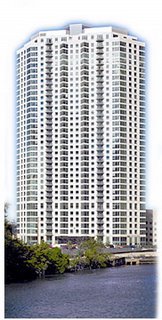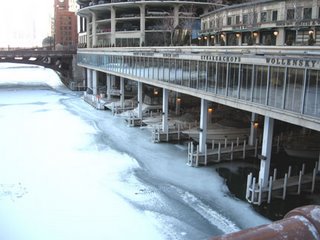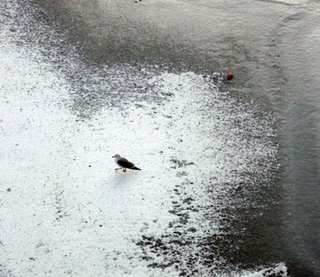In the press this weekend:
Chicago's Two Track Building Boom - Tribune architecture critic Blair Kamin explores how a monopolization of attention by high profile projects like Santiago Calatrava's
Chicago Spire is overshadowing the far larger number of clunky

new buildings that are littering the city. For every elegant solution, from
Laurence Booth's
30 West Oak (pictured), or
Miller/Hull's
156 West Superior, there's at least as many skyline-scarring clunkers like DeStefano + Partners
Left Bank at Kinzie Station 
, which evokes less the sidewalks of Paris than a kind of architectural K-ration. It's possible that over the decades we'll come to accept, if not actually love, these kind of lazy build, flip, and repeat developments at which Fifield is a master, but it's more likely that the only thing they're accomplishing is lowering the standard of mediocrity. Ultimately, they're parasitic - bringing people back to city and its neighborhoods at the same time as they eat away at the character that makes them attractive places to live in the first place. Read it
here.
Winter - It Will Actually End? - With subzero

cold leaving the Chicago River covered in ice in the first time in years, and our East coast compatriots buried in up to ten feet of snow, it's

enough to make you momentarily doubt global warming, or even wonder if Spring will ever come. A hopeful answer came this week, not from a groundhog, but from the Sunday New York Times, which is carrying a full page ad announcing this summer's
schedule for the Tanglewood Festival, for which tickets go on sale today. Ravinia's former long-time Music Director James Levine will lead performances of
The Damnation of Faust,
Bluebeard's Castle, and the full, four-act version of
Don Carlos with Patricia Racette, Johan Botha and Samuel Ramey, as well as a sequence of fully-staged performances of
Cosi Fan Tutte. It tends to be a little pricey, though - top tickets going for just a buck less than $100.00, versus a typical $50.00

top at last year at Ravinia, although Tanglewood wins out for the lowest priced seats - $18.00 versus Ravinia's $20.00. See the full schedule
here.
CSO Still Top Ten - Meanwhile, Financial Times Music Critic Andrew Clark
writes how, despite an increasing roster of quality orchestras worldwide, the list of the best of the best is pretty much the same as it was fifty - or even a hundred - years ago. According to Clark, while an exceptionally inspiring conductor like Mariss Jansons or Simon Rattle can make an ensemble like the Oslo Philharmonic or City of Birmingham Symphony appear world class, the quality of play seldom endures after their departure, and we're left with the usual suspects, which in America means the inevitable "Top Five" - New York, Chicago, Philadelphia, Cleveland and Boston. In Clark's own current global top ten, James Levine's Met Orchestra replaces Maazel's New York Philharmonic, Eschenbach's troubled Philadelphia doesn't make the cut, and the Chicago Symphony is grudgingly included, despite its "over-dominant brass" making it the embodiment of "pure American beefcake," which is pretty funny, when you consider that it's largely the product of two Hungarians named Reiner and Solti. Read it
here.














